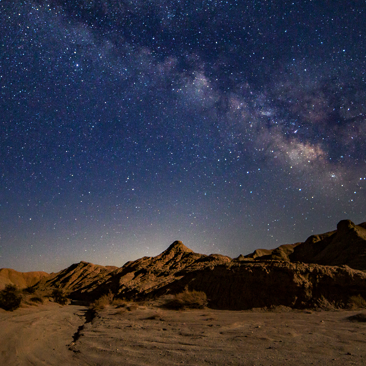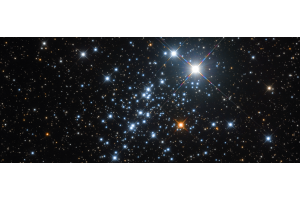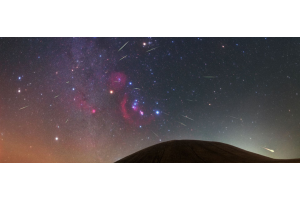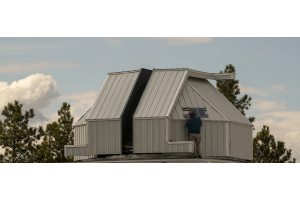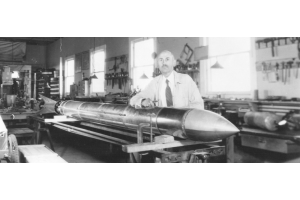
It’s time to plan the annual family vacation, and you’ve persuaded your nearest and dearest that some time under the stars would benefit everyone. More to the point, you’re now daydreaming about pristine dark skies and bagging those faint fuzzies that have eluded you from your regular observing spot.
So where do you want to go? Are you looking to venture overseas? Maybe you’d like to discover the wonders of the southern hemisphere? Or perhaps you’re looking to make a family road trip to a previously unexplored corner of the US?
As of November 2023, DarkSky International has certified over 160,000 square kilometers (nearly 100,000 square miles) of land in 22 countries as meeting their criteria for being a dark sky location. That’s a lot of land! So where do you start? How can you choose from the best of the best?
Fortunately, we’ve done the hard work for you, and in this article, we’ll take a look at the top 10 dark sky parks around the world. To balance things out a little, we chose five parks located overseas, with the remaining five located within the US.
How the Locations Were Chosen
DarkSky International recognizes a total of six types of dark sky locations. These are:
For the purposes of this article, we’ve focused solely on the Dark Sky Parks. There are several reasons for this; firstly, there are far more parks than anything else (118 in total), and secondly, while parks may be situated on either public or private land, they are readily accessible by the public. (Not to mention, by definition, they are locations you can base your vacation around!)
Of those, 32 are located overseas, while the remainder can be found within the US, with most of those located in the southwestern area of the country.
The Criteria
How can you choose 10 top dark sky sites from a list of over 100? As you might expect, a lot depends on the weather and the likelihood of clear skies at that location - after all, you don’t want to spend a bunch of money and then be clouded out!
For that, we went to Weather Spark and found the nearest location to the park with historical weather data. Some parks had their own data, but for most, we took the data from a location just a few miles away.
For each location, we looked at which month had the best chance of clear skies and used that as the basis for the other criteria. (Incidentally, perhaps not surprisingly, in most cases the best chances of clear skies in the northern hemisphere are during the summer and early fall months, but the closer you get to the equator, the greater your chances of getting clear skies later in the year.)
Then, for that location’s best month, we also considered the number of days during that month when rain could be expected and the average number of daylight hours.
Lastly, we also took into account the location’s proximity to the equator, with the thinking being that the closer the location was to the equator, the more you’ll be able to see from both celestial hemispheres.
We then ranked the data for each location and used its average ranking to determine which locations were the best.
For example, the best month to visit the Petrified Forest National Park in Arizona is June. That’s when the skies have an 81% chance of being clearer, and it’s expected to rain during just 1.5 days that month. Unfortunately, while its latitude of 35.0° north is admirable, the average number of daylight hours is 13.5 for the month. When all this data is taken into consideration, this places it 25th in rank compared to all the other locations.
The trick, of course, is to find a balance, but that’s not always possible. Obviously, winter brings longer nights, but also inclement weather, and your chances of having clear skies will diminish as a result! (We’re also assuming your family will want to enjoy some nice weather during the daylight hours too!) With all this in mind, here are our selections for the Top 10 Dark Sky Parks:
International

United States

The Best International Dark Sky Parks
If you’re looking to travel overseas, there’s a fairly wide variety of parks on DarkSky’s list to choose from. With a latitude of 57.2°, the most northerly is Tomintoul and Glenlivet, in the Cairngorms, Scotland, but unfortunately, even during its best month, it only has a 43% chance of clear skies.
Similarly, the most southerly park is Wai-Iti in New Zealand. Its latitude of 41.4° south makes this a tempting destination for anyone wanting to explore the celestial wonders that are typically hidden from the northern hemisphere. However, the cooler temperatures of March and the 1 in 3 chance of cloudy skies may give you pause for thought.
Best in Asia - Hehuan Mountain, Taiwan
When it comes to dark skies, you can’t really go wrong with a mountain! Besides lifting you up and away from the light pollution of urban areas, the thinner air also provides clearer, more stable views of your target. Its latitude of 24.2° north also means your eyes can see quite a way into the southern celestial hemisphere too.
While situated in the tropics, Hehuan Mountain’s elevation of a little over 11,200 feet (3,400 meters) makes it a great place to enjoy the snow. It’s also a popular destination for both hikers and nature lovers, with the area being known as one of the most ecologically diverse in Asia.

Best in Europe - Aenos National Park, Greece
A recent addition to DarkSky’s list, the Aenos National Park is located on the southern side of Kefalonia, which is itself just off the western coast of Greece. With the country being the birthplace of so many constellations, this is the ideal location to stare at the stars as the ancients once did.
The park has made substantial efforts to reduce lighting over recent years and offers free observing nights to the public. As an added bonus, astronomical equipment is also on hand to help you make the most of your visit - and if you visit in July, you’re almost guaranteed clear skies.
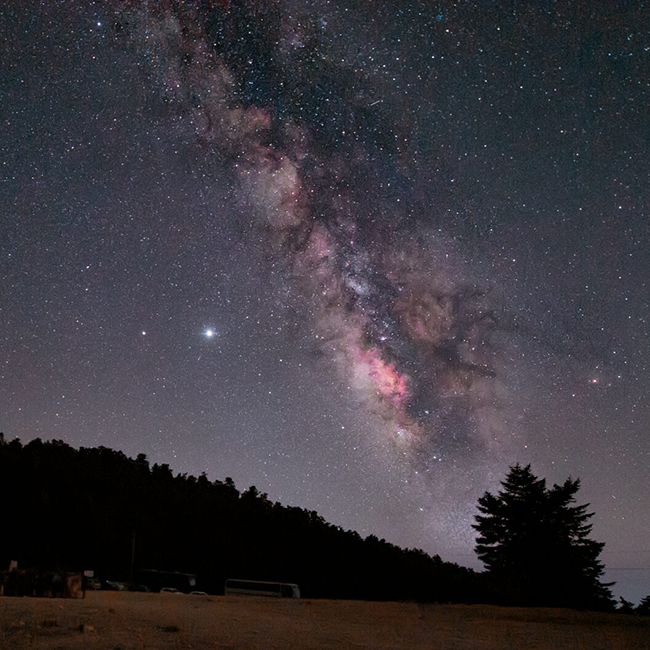
Best in the Southern Hemisphere - Warrumbungle Dark Sky Park, Australia
Many of us north of the equator dream of discovering the deep-sky wonders of the southern hemisphere, but the trip can sometimes prove to be expensive. That’s why it’s a good idea to pick the best location possible for your observation - and the Warrumbungle Dark Sky Park in Australia nicely fits the bill.
Looking for something to do during the day? The Siding Spring Observatory is located nearby, but be sure to dress up warm - August is the best time for clear skies, but that’s winter in the southern hemisphere. With an average high in the mid-60s and an overnight low in the 40s, you may want to bring a sweater!

Best for Clear Skies - Ramon Crater Nature Reserve, Israel
While you’re unlikely to find a location that can guarantee 100% clear skies, you might just get that at the Ramon Crater Nature Reserve in Israel. Located in the Negev Desert in the south of the country, the area is known for dolomite and sandstone and is popular with those who enjoy hiking, cycling, and horseback riding.
Despite its location in the desert, the daytime highs are tolerable, with an average high in August (when the skies are clear pretty much 100% of the time) being in the low 90s. That’s noticeably less than Las Vegas, which averages highs in the low 100s during the same month. And with a latitude of 30.6° north, you’ve got a good chance of spying some southern delights too.
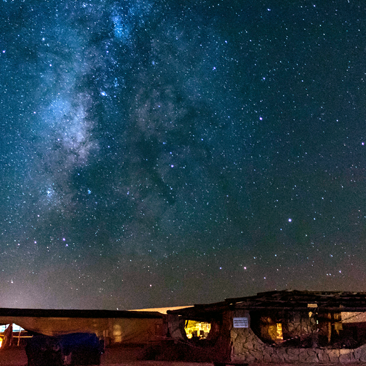
Best for Clear Skies & Long Nights - Yeongyang Firefly Eco Park, South Korea
Clear skies are one thing, but you also want a long night so you have plenty of time to enjoy them. That’s where the Yeongyang Firefly Eco Park in South Korea comes out best. During its best month - December - it has roughly 14.3 hours of night and offers a 74% chance of clear skies.
You’ll find it in the valley of the Wangpi River, roughly 15 miles (23km) northeast of Yeongyang itself. As for the fireflies, the park is a conservation area for the glowing bugs, but that doesn’t deter amateur astronomers from swarming to the area. Unfortunately, as you might expect, the temperatures can be chilly in December, with an average in the mid-40s and a low close to freezing.
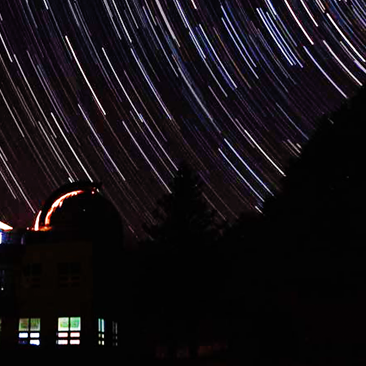
The Best Dark Sky Parks in the United States
While the parks overseas are certainly worth consideration, you won’t be disappointed with the options in the US either. In fact, as noted earlier, most of DarkSky’s locations are in the US, with the vast majority (nearly half of all the parks, globally) being in the southwest.
Of these, a large number are in Utah, making the state a good choice if you’re looking for some R ‘n R under the stars. Perhaps not surprisingly, the best of these is Zion National Park, with September proving to be the best month. You can expect an 84% chance of clear skies at that time, with about 12 hours of darkness and average daytime temps in the mid-70s.
Midwest - Middle Fork River Forest Preserve, Illinois
When you think of dark sky locations, you might not necessarily think of Illinois. After all, it’s home to Chicago, the third largest city in the US. However, about two and a half hours drive due south is the Middle Fork River Forest Preserve, an area boasting nearly 20 miles (12 km) of trails, an oak forest, flora and fauna, plus, of course, the river itself.
If you love fishing and astronomy, you simply won’t know what to do with yourself. Should you sleep at night and fish during the day, or sleep during the day and stargaze at night? August is the best month for astronomy, with a 68% chance of clear skies and a little over ten hours of darkness. The average overnight low is in the mid-60s, but if you choose daytime activities, you’ll find the average high in the mid-80s.

Northeast - Cape Lookout National Seashore, North Carolina
North Carolina is located roughly halfway along the east coast, so it could be argued that it belongs in either the northeast or southeast. That said, DarkSky has designated the Cape Lookout National Seashore as being in the northeast region, but regardless of its location, you’ll find it to be an excellent vacation spot for the entire family.
During the day, you can enjoy the sandy dunes and grasslands, or simply stare out across the Atlantic Ocean. At night, you can venture outside and sail the ocean of stars by gazing up at the Milky Way arching across the sky above.
The best time of year is October, when the skies are 62% clear and the average daytime high is in the mid-70s. It may be a little on the cool side for dipping your foot in the water, but with an average overnight low of 61 degrees, you should have no hesitation in immersing yourself in the glow of the stars.
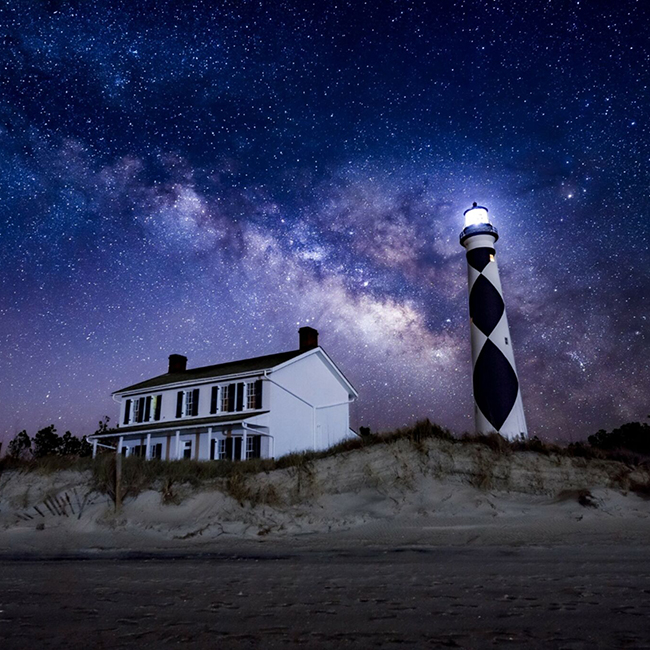
Southeast - Big Cypress National Preserve, Florida
If you’re looking for an astronomical winter getaway, then the Big Cypress National Preserve in Florida could be just the ticket. While most of the country freezes in February, the park enjoys an average daytime high of 76° F and an average overnight low of 57° F. Chances are the skies will be clear two-thirds of the time, and with a little more than 12 hours of darkness, you should have plenty of time under the stars.
Located just under 45 miles (77 km) west of Miami and with a latitude of 25.9° north, this is also the most southerly dark sky park in the United States. If you live in the mid-latitudes, this makes it a perfect choice for spying many of the southerly deep sky wonders - and without the worry of forgetting your passport.
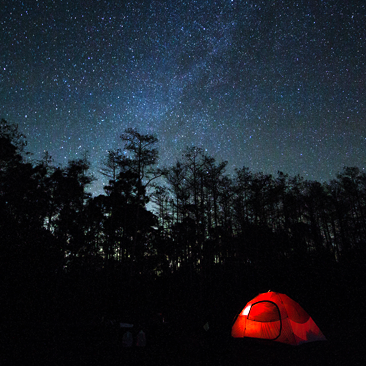
Southwest - Grand Canyon-Parashant National Monument, Arizona
Of all the dark sky parks located in the southwest, the Grand Canyon-Parashant National Monument in Arizona ranks as the best. Located close to the Arizona/Nevada border and the Grand Canyon just to the south, this park promises stunning views of the local scenery during the day and awe-inspiring views of the cosmos at night.
September provides the best chances of clear skies, but even then you should expect an average daytime high in the mid-90s and an overnight low of just under 70° F - so be sure to stay hydrated!

West - Anza-Borrego Desert State Park, California
If you’re familiar with California’s dark sky locations, you might think the Joshua Tree National Park is the best the area has to offer - but in fact, the Anza-Borrego Desert State Park just barely beats it to the top spot. Both parks are best visited in September, and both enjoy an average of 11.7 hours of darkness that month.
However, the Anza-Borrego Desert State Park has a slightly better chance of clear skies, and it’s slightly further south. That said, Anza-Borrego Desert State Park can be found to the northeast of San Diego, so if you live in or north of Los Angeles, you might prefer Joshua Tree as it’s a little more conveniently located. Whichever park you choose, you won’t be disappointed with the dark skies and sights on offer, and can certainly promise your family a vacation to remember.
